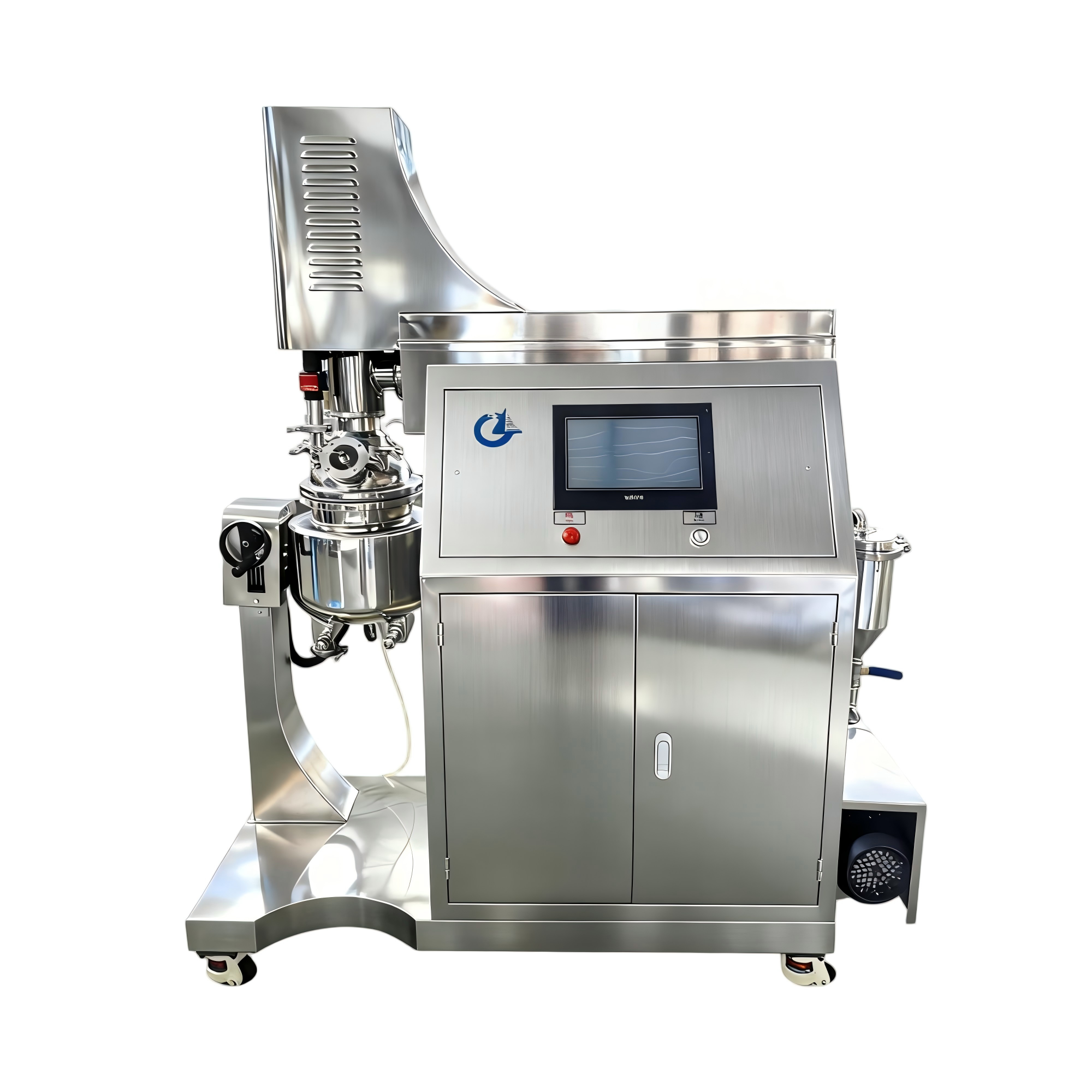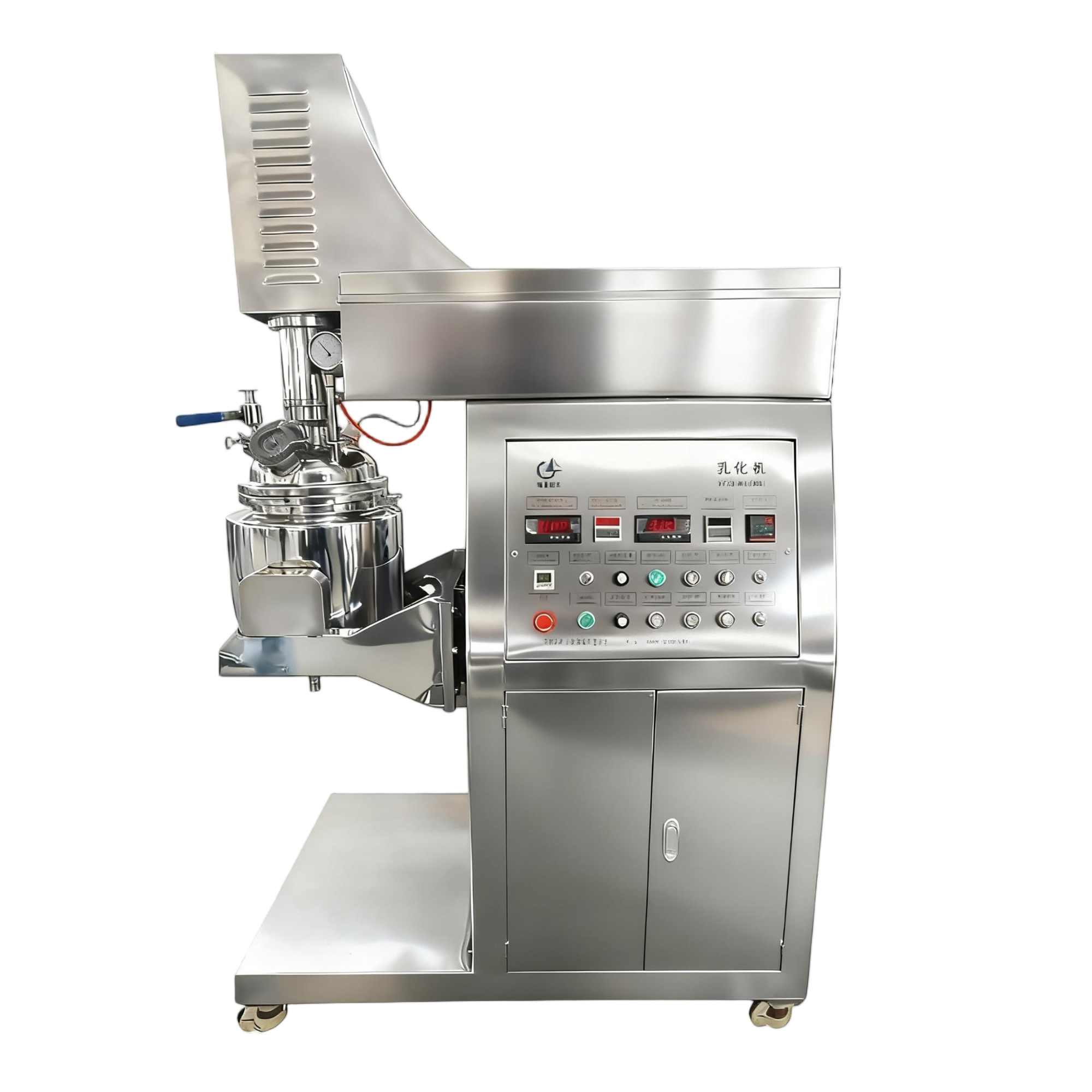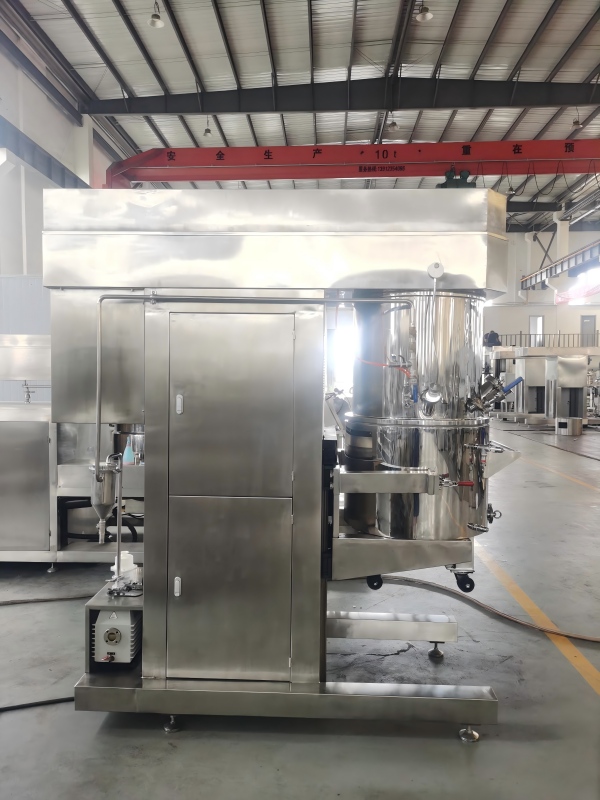Working Principle and Selection of Emulsifiers
An emulsifier achieves emulsification through the high-speed rotation of the homogenizing head in the main tank. It subjects the materials to shearing, dispersing, stirring, impacting and other physical actions, resulting in a finer and more uniform texture. Oils and water from the emulsifier’s oil tank and water tank fully integrate with the materials to realize the emulsification effect, which is a physical working principle. Emulsifiers are mainly used in the production and processing of cream-based products.
Core Working Principle
The homogenizing head of the emulsifier features a claw-type structure. The main tank is made of 304 stainless steel with a smooth inner wall. The homogenizing head stirs while scraping the tank wall and suctions materials bidirectionally, enhancing shear efficiency.
Emulsifiers boast high-shear and vacuum homogenizing emulsification capabilities. The rotor rotates at a high and stable speed, generating comprehensive kinetic energy including high-frequency and intense circumferential tangential velocity and angular velocity. With the stator’s cooperation, the narrow and precise gap between the stator and rotor creates strong and reciprocal effects such as hydraulic shearing, friction, centrifugal extrusion and liquid collision. Materials circulate through this process repeatedly in the tank to form the final product.
Operational Process:
Driven by centrifugal force from the high-speed rotating rotor, materials are axially drawn into the working chamber from both upper and lower feeding areas of the working head.
Strong centrifugal force flings materials radially into the narrow and precise gap between the stator and rotor. Simultaneous centrifugal extrusion, impact and other forces initially disperse and emulsify the materials.
The outer end of the high-speed rotating rotor reaches a linear velocity of at least 15 m/s (up to 40 m/s), creating intense mechanical and hydraulic shearing, liquid layer friction, impact and tearing. This fully disperses, emulsifies, homogenizes and crushes the materials, which are then ejected through the stator slots.
The high-speed radially ejected materials change direction under resistance from the material itself and the tank wall. Meanwhile, the upper and lower axial suction forces generated in the rotor area form two strong turbulent flows. After several cycles, the materials complete the dispersion, emulsification and homogenization process.
Application Scope: Emulsifiers are widely used in the food industry (e.g., sauces, fruit juices), pharmaceutical industry (e.g., ointments), petrochemical industry, paint and ink production. They are suitable for mixing, stirring, dispersing, homogenizing, emulsifying and grinding applications in laboratory research and industrial production.

Key Selection Considerations
Different materials have significantly varying requirements for emulsification precision. When selecting an emulsifier, it is essential to choose the appropriate configuration and design based on the actual material properties and precision requirements to achieve optimal emulsification results. Even for the same product, different configurations of emulsification equipment can yield varying homogenization effects.
News
- Latest News
- Solutions
- FAQ
Recommend Products
-
 5L Vacuum Emulsifying Homogenizer Mixer
5L Vacuum Emulsifying Homogenizer MixerThe 5L vacuum emulsifying mixer is a device designed for emulsifying and mixing various substances in a vacuum environment. This equipment is equipped with a mixing tank with a capacity of 5 liters and is widely applied in industries such as food, pharmaceuticals, cosmetics, and pesticides.
-
 5L PLC-Screen Vacuum Emulsifying Mixer
5L PLC-Screen Vacuum Emulsifying MixerThe 5L PLC-Screen Vacuum Emulsifying Mixer is a device designed for emulsifying and mixing various substances in a vacuum environment. This equipment is equipped with a mixing tank with a capacity of 5 liters and is widely applied in industries such as food, pharmaceuticals, cosmetics, and pesticides.
-
 10L Vacuum Emulsifying Homogenizer Mixer
10L Vacuum Emulsifying Homogenizer MixerThe 10L Vacuum Emulsifying Mixer is a device used for emulsifying and mixing various substances in a vacuum environment. It is commonly used in industries such as food, cosmetics, and pharmaceuticals.


 English
English Russian
Russian French
French Spanish
Spanish Portuguese
Portuguese Korean
Korean Japanese
Japanese Thai
Thai
![Installation, Commissioning, Maintenance and Upkeep of 20L Double Planetary Mixer [Technical Version]](/web/uploads/image/20251115/Rz1O1nQrou307600Q66XxAP07No478kl.webp)




